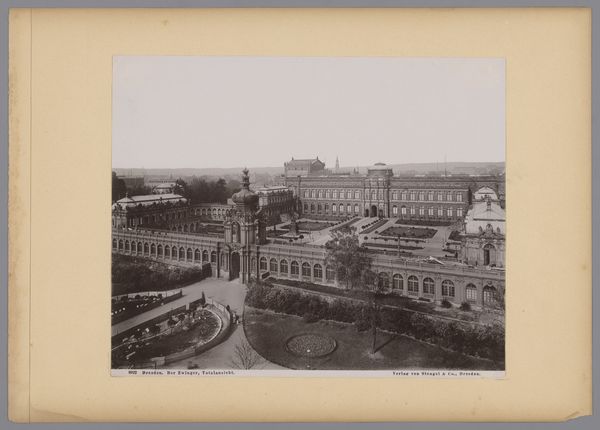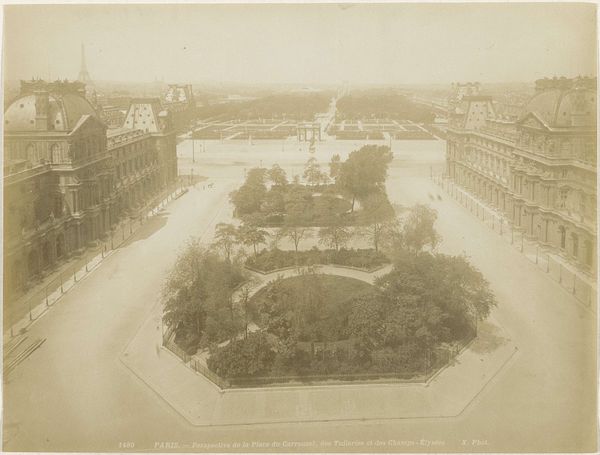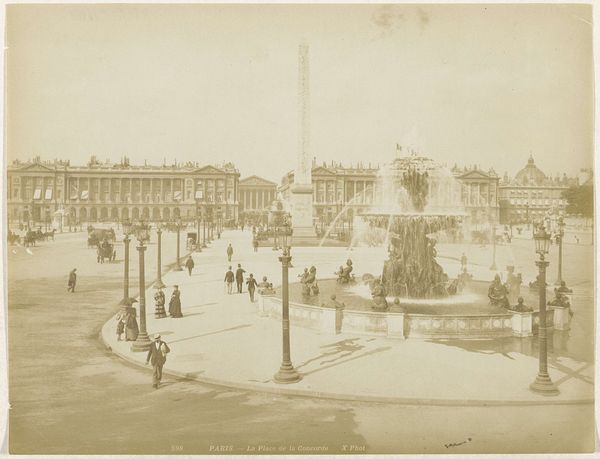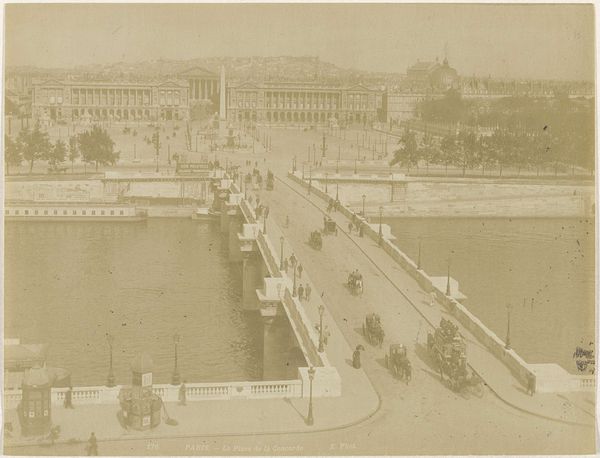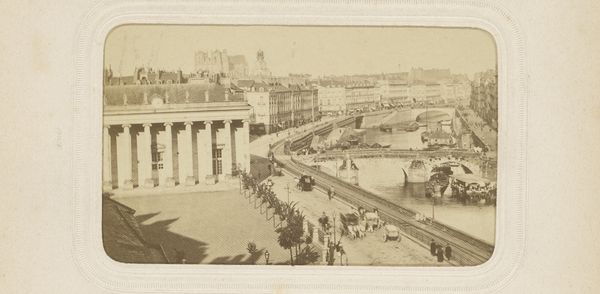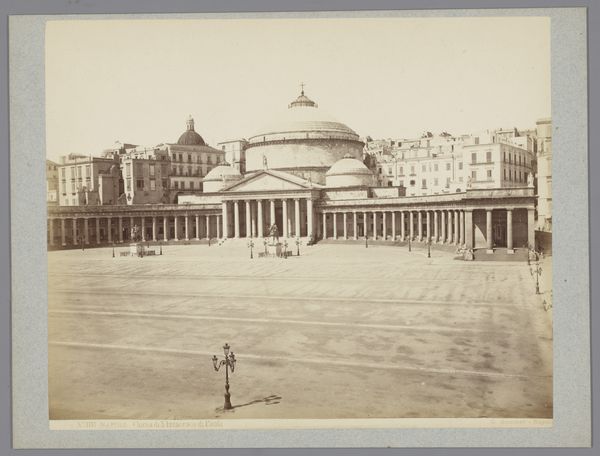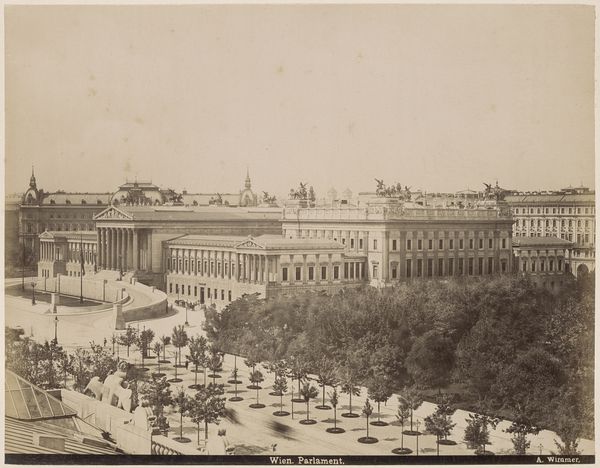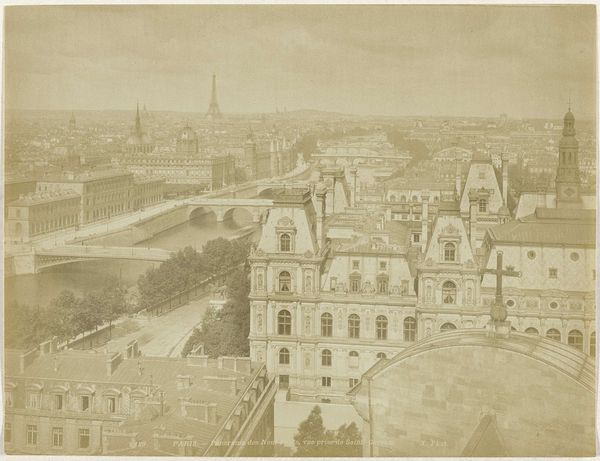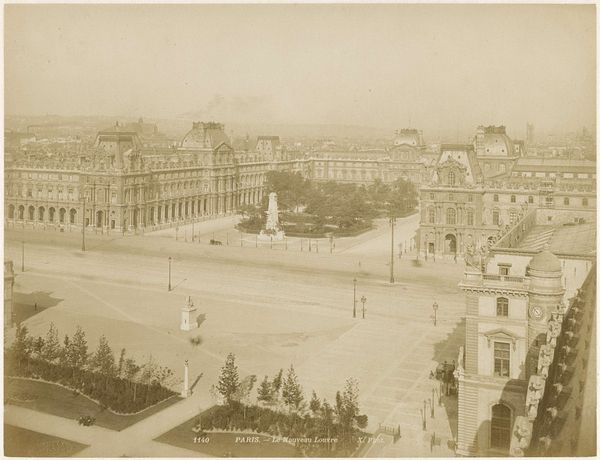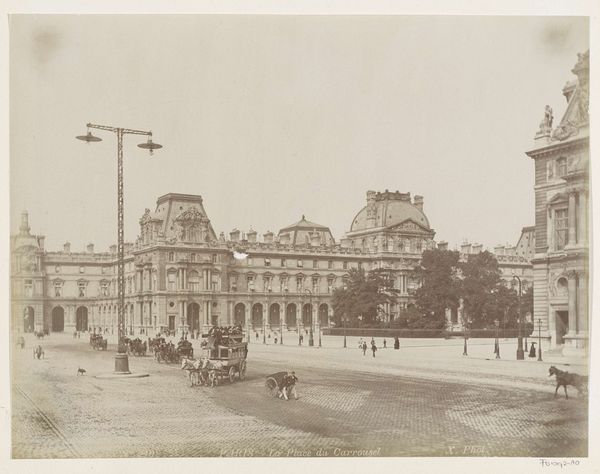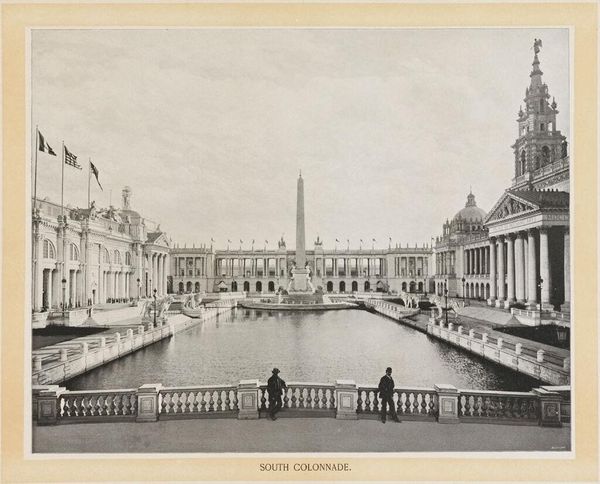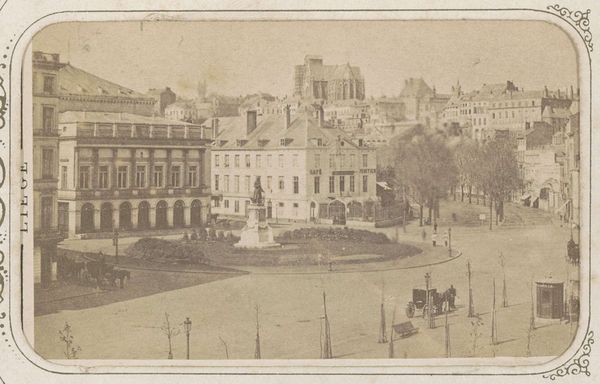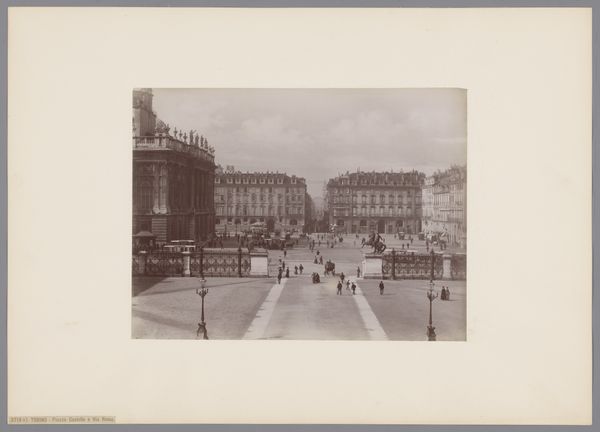
photography
#
muted colour palette
#
street-photography
#
photography
#
19th century
#
cityscape
Dimensions: height 203 mm, width 277 mm
Copyright: Rijks Museum: Open Domain
Curator: Here we have "Stadsgezicht van Londen", or "Cityscape of London", a photograph that offers a captivating view of Trafalgar Square, likely taken between 1860 and 1915. Editor: The monochrome aesthetic creates such a nostalgic atmosphere; it feels almost like stepping back in time and imagining the echoes of voices through the square. The composition really focuses the eye, too—leading it straight to Nelson's Column. Curator: Indeed. And it's essential to consider what Trafalgar Square meant in that era. It was, and remains, a significant public space, but one whose symbolic power evolved considerably through different moments of British history, frequently contested along lines of class, empire, and nationalism. Editor: It strikes me as more formal here than I experience it now. Seeing this almost-empty expanse really highlights the rigid lines and colonial architecture. Where is everyone? Today this place pulses with protests, celebrations, and everyday encounters. Where is that reflected? Curator: Well, photographs of public space in this era frequently highlight the architecture precisely to reinforce the civilizational ideals, the permanence of empire, and social order. Street photography hadn't yet embraced the gritty realities of everyday life in the city, so the relatively few figures you see are deliberately positioned to emphasize scale. Editor: Still, even considering those factors, there's an undeniably muted energy to this particular depiction, wouldn't you say? This rendition certainly isn’t as active or chaotic as later photos I’ve viewed. It also reads quite detached. Curator: I see your point, but this might also reveal assumptions inherent to photographic representations. Early photographs tended to require longer exposure times, making movement blur. But more fundamentally, how do we interpret our presence within monumental spaces dedicated to the display of imperial authority? Is relative absence itself a statement? Editor: A potent question. For me, seeing it through that lens adds further dimensions—suggesting more complexity beneath the image's sedate veneer. Curator: Agreed. Photographs like these serve as compelling evidence of how a nation constructs and propagates a particular image of itself through key public sites. Editor: An important reminder to critically engage with every image, be it historical or contemporary.
Comments
No comments
Be the first to comment and join the conversation on the ultimate creative platform.
